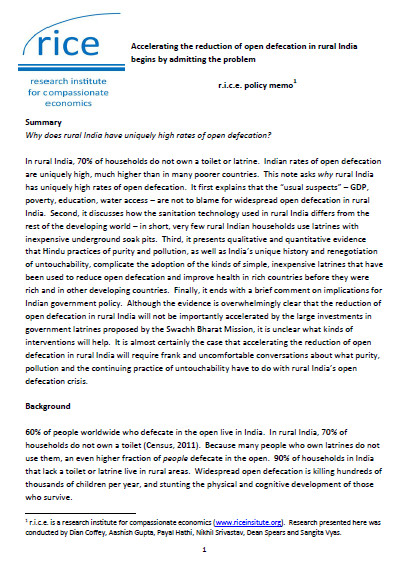Accelerating the reduction of open defecation in rural India begins by admitting the problem
 |
Why does rural India have uniquely high rates of open defecation?
note Feb 2015 ; 13 pages
Ed. RICE Institute - Amston
Téléchargeable sous format: PdF
Téléchargeable chez l'éditeur
Page de présentation d'un éditeur
Abstract:
This notes asks why rural India has uniquely high rates of open defecation.
It first explains that the “usual suspects”—GDP, poverty, education, water access—are not to blame for widespread open defecation in rural India.
Second, it discusses how the sanitation technology used in rural India differs from the rest of the developing world—in short, very few rural Indian households use latrines with inexpensive underground soak pits.
Third, it presents qualitative and quantitative evidence that Hindu practices of purity and pollution, as well as India’s unique history and renegotiation of untouchability, complicate the adoption of the kinds of simple, inexpensive latrines that have been used to reduce open defecation in other developing countries.
Mots clefs: |
ATPC Assainissement Total Piloté par la Communauté (CI) (DT) (OP) (ope) , rites et cultures (CI) (DT) (OP) (ope) |
Pays concerné: |
Editeur/Diffuseur: |
|
RICE Institute - Amston - Etats Unis |
En cas de lien brisé, nous le mentionner à communication@pseau.org